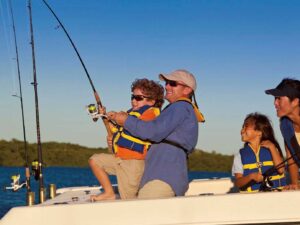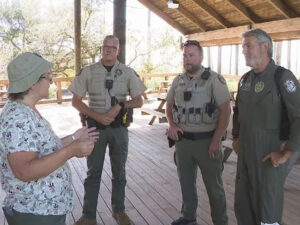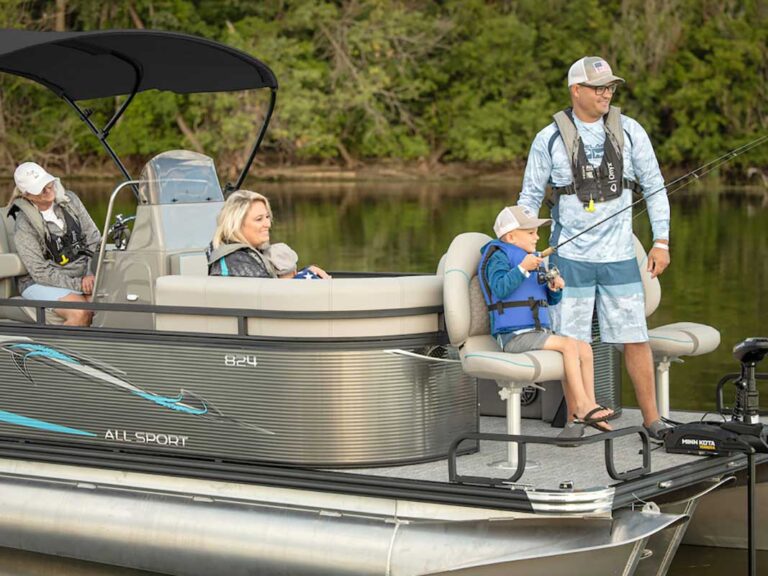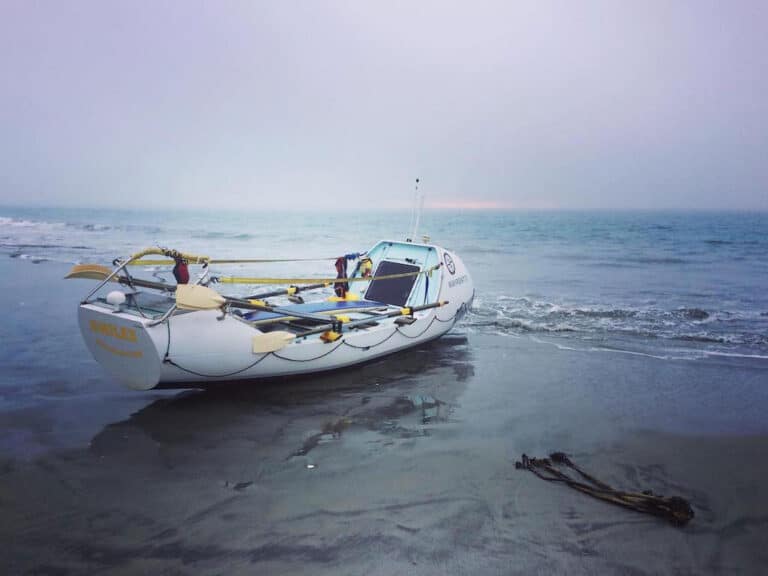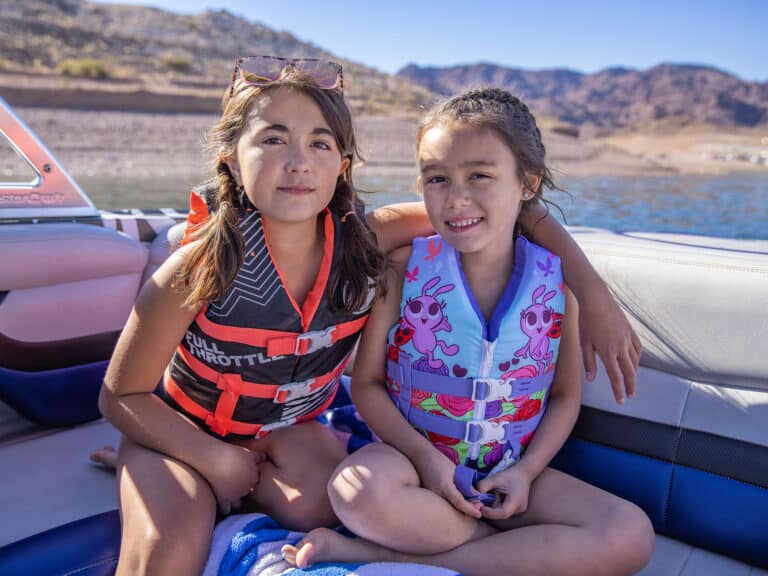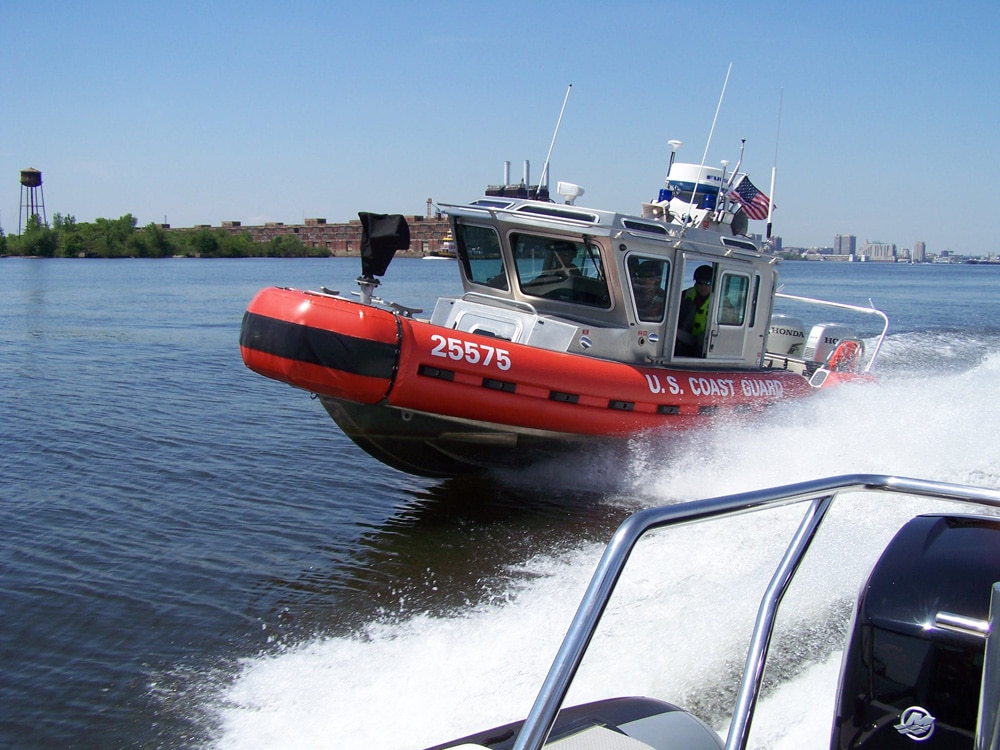
Our mission at the U.S. Coast Guard is to save lives, so the sight of flashing blue lights and a U.S. Coast Guard patrol vessel pulling alongside is no reason for boat owners to panic. The Coast Guard conducts approximately 70,000 boardings a year in its multiple roles of enforcing maritime law, conducting search and rescue operations, promoting boating safety, preventing damage to marine environments, and helping to defend the nation’s borders. Our motto is Semper Paratus – “Always Ready.” The more time a boater spends on the water, the more likely he or she will have the pleasure of a Coast Guard boarding.
Most often, the decision to board is based on the activity, the location, and, in some circumstances, obvious violations such as operating at night without navigation lights, or improper display of registration numbers. To help us decide, we usually ask a series of pre-boarding questions; for example: What was the vessel’s last port of call and next port of call? How many persons are aboard? What is the purpose of your voyage?
If we decide to board, consider it an important opportunity to learn something new about safety equipment and safe boating practices. Typically, a uniformed Coast Guard Boarding Team of two to four boarding officers will come aboard, introduce themselves, and state the reason for the boarding. The officer in charge will ask if you have any weapons aboard and conduct an initial safety inspection to identify any obvious safety hazards and to verify the general seaworthiness of your vessel.
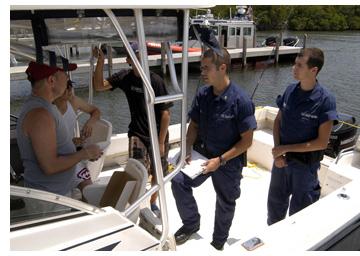
The officer will then ask to see the boat’s registration or other documentation and proceed to a more detailed inspection of your vessel’s required safety equipment – life jackets, fire extinguishers, flares, etc. You should know that we check every aspect of each item on our list. For example, with life jackets – the item most frequently cited for violations – we check to see if you have them aboard, in good and serviceable condition, Coast Guard-approved, properly stowed, and the correct size for the intended wearers.
When the boarding inspection is complete the Officer will provide you with a copy of the Report of Boarding, noting any discrepancies related to your vessel. You will receive either a yellow copy, if no discrepancies were noted, or a white copy, if there were. A white copy indicates a warning or a Notice of Violation, and the Boarding Officer will explain the procedures you will need to follow. The procedures are also written on the reverse of the form you receive. If you have any questions, ask the Boarding Officer before the team departs.
The Coast Guard would like to see all vessels in compliance, and safely operated. If you’re uncertain about the safety requirements for your particular vessel, one way to make sure you’re in compliance is to schedule a Vessel Safety Check (VSC), offered free through a program cosponsored by the U.S. Coast Guard Auxiliary and United States Power Squadrons. Log on to www.safetyseal.net or contact a Coast Guard Auxiliary member at your local marina. Qualified examiners will come to your vessel and inspect it for all the required equipment. Those vessels that pass will be issued a VSC decal indicating a successful check. Vessel Safety Check examiners do not issue citations, so if you don’t pass it’s an opportunity to correct the problem before being stopped by a Coast Guard patrol vessel.
Avoiding a citation should be easy: obey the rules of navigation, ensure that your boat is properly registered and marked, and keep and maintain required safety equipment.
And remember, drowning is the number one cause of boating fatalities, and the most preventable. So wear those life jackets, don’t just carry them.
The U.S. Coast Guard is asking all boat owners and operators to help reduce fatalities, injuries, property damage, and associated healthcare costs related to recreational boating accidents by taking personal responsibility for their own safety and the safety of their passengers. Essential steps include: wearing a life jacket at all times and requiring passengers to do the same; never boating under the influence (BUI); successfully completing a boating safety course; and getting a Vessel Safety Check (VSC) annually from local U.S. Coast Guard Auxiliary, United States Power Squadrons(r), or your state boating agency’s Vessel Examiners. The U.S. Coast Guard reminds all boaters to “Boat Responsibly!” For more tips on boating safety, visit www.uscgboating.org.

